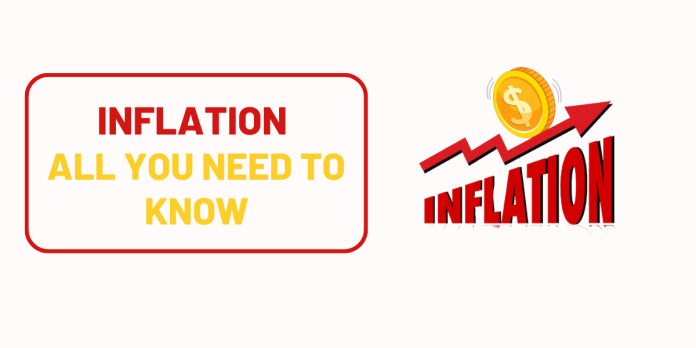Inflation is a measure of the rate at which the prices of goods and services are rising over time. It is calculated by comparing the prices of a basket of goods and services in a given month to the prices of the same basket of goods and services in a previous month. The percentage change in the prices of the basket of goods and services is the inflation rate.
There are two main measures of inflation in India: The Wholesale Price Index (WPI) and the Consumer Price Index (CPI).
Wholesale Price Index (WPI)
The WPI measures the changes in the prices of goods sold in bulk to businesses and traders. It is calculated using the price data of 677 commodities collected from 133 markets across India. The WPI is released every week by the Ministry of Commerce and Industry.
The WPI is a good indicator of inflationary pressures in the economy. However, it is not a perfect measure of inflation from the consumer’s point of view. This is because the WPI does not include the prices of services, which account for a growing share of consumer spending.
Consumer Price Index (CPI)
The CPI measures the changes in the prices of goods and services consumed by households. It is calculated using the price data of 249 items collected from 111 markets across India. The CPI is released every month by the Ministry of Labour and Employment.
The CPI is a more accurate measure of inflation from the consumer’s point of view than the WPI. This is because the CPI includes the prices of services, such as transportation, healthcare, and education.
Which measure of Inflation is more important?
The CPI is now the more widely consulted measure of inflation in India. This is because the CPI is a more accurate measure of inflation from the consumer’s point of view.
The Reserve Bank of India (RBI) also uses the CPI to set its monetary policy. The RBI’s current inflation target is 4% with a band of 2%. This means that the RBI aims to keep inflation between 2% and 6%.
How is Inflation calculated?
The WPI and CPI are calculated using a weighted average of the prices of the goods and services in the basket. The weights are assigned to the goods and services based on their importance in the consumer’s budget.
For example, the weight of food items in the CPI is higher than the weight of clothing items. This is because food items account for a larger share of consumer spending than clothing items.
Factors that affect Inflation
- Demand-pull inflation: This occurs when there is too much money chasing too few goods and services.
- Cost-push inflation: This occurs when the costs of production increase, leading to higher prices for goods and services.
- Built-in inflation: This occurs when workers demand higher wages to keep up with inflation, which leads to higher prices for goods and services.
- Imported inflation: This occurs when the prices of imported goods and services increase.
How to control Inflation
The government and the RBI can use a number of tools to control inflation, including:
Monetary policy: The RBI can use monetary policy tools, such as interest rates and open market operations, to control the supply of money in the economy.
Fiscal policy: The government can use fiscal policy tools, such as taxation and spending, to control the demand for goods and services in the economy.
Supply-side policies: The government can use supply-side policies, such as improving infrastructure and increasing investment, to increase the supply of goods and services in the economy.
Conclusion
Inflation is a complex economic phenomenon with a number of causes and effects. In India, inflation is measured using two main indices: the Wholesale Price Index (WPI) and the Consumer Price Index (CPI). The CPI is now the more widely consulted measure of inflation, as it is a more accurate measure of inflation from the consumer’s point of view.
The government and the RBI use a number of tools to control inflation, including monetary policy, fiscal policy, and supply-side policies. However, inflation is a difficult problem to solve, and it can have a significant impact on people’s lives.


